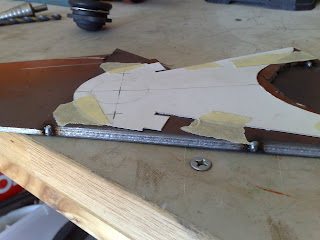I picked up some seats from a Holden Piazza for $100
Because of the VERY small and narrow passenger compartments, most regular seats will not fit
These seats are pretty narrow, comfortable and quite "buckety" but they are still too wide by about 2 inches so i will have to narrow them.
Removed the seat runners, split the base from the back and removed the cushions and covers. The bolsters are seperate cushions and are adjustable to squeeze around your chest. There are many other adjustments on these seats but i won't need them. I will leave off the bulky adjuster mechanism and bolt a plate on the hinge instead. Will just have to make sure it's at the right angle coz i'll be stuck with it!
So with the seat stripped down i am left with the base and backrest frames.
On the backrest, i cut 2 inches out of the bottom beam and an inch out of each side at the top corners. If i had taken 2 inches out of the centre at the top, i would have had to modify the headrest aswell, but this way i can leave it as it is.
Pretty similar procedure for the base but much more simple.




















































